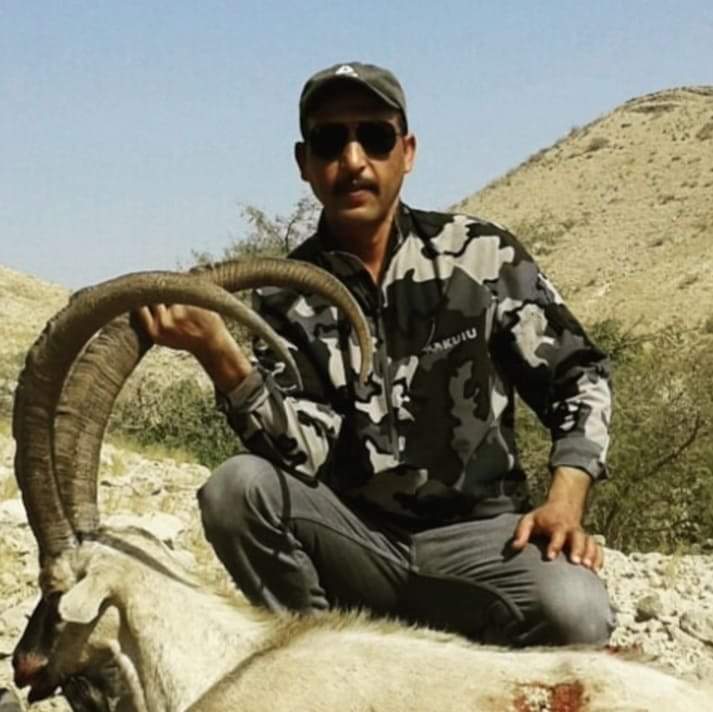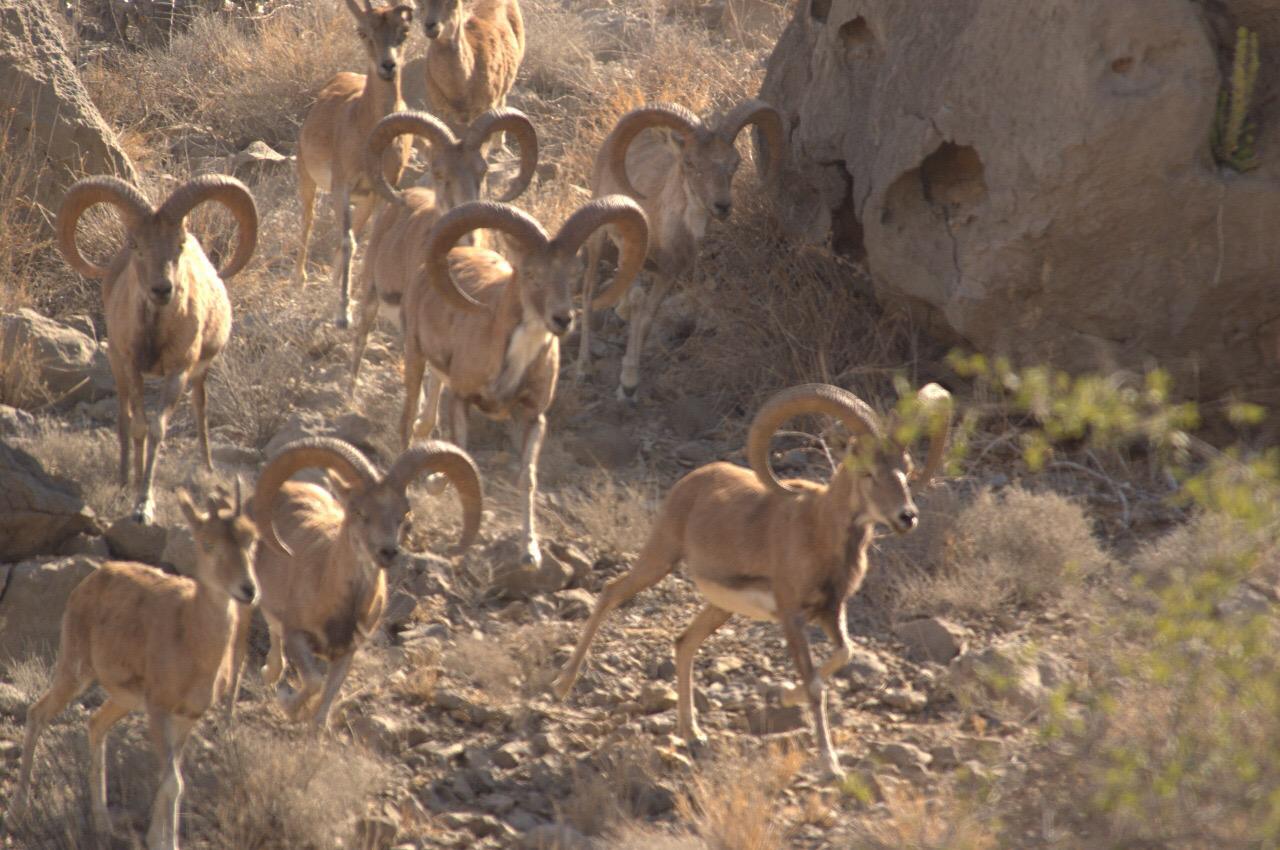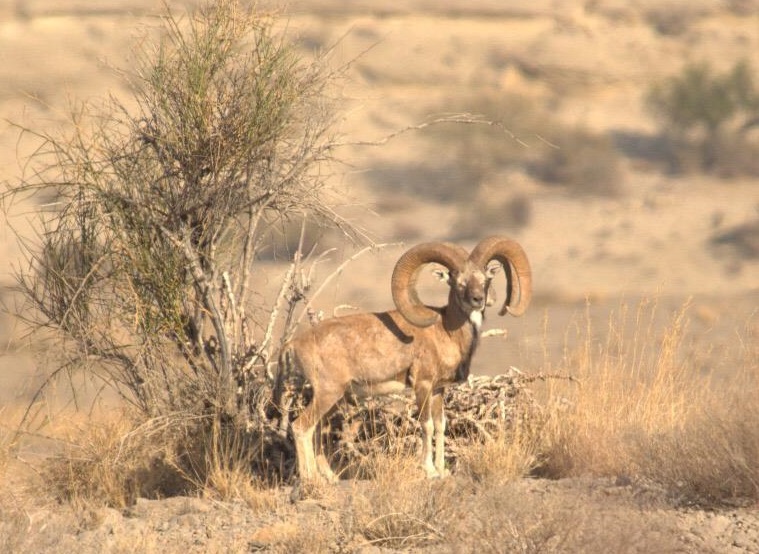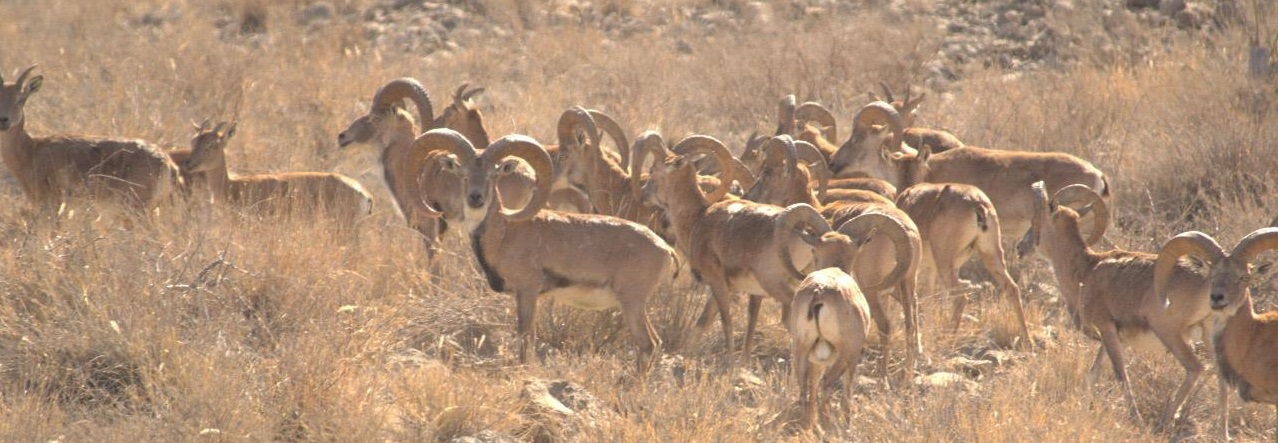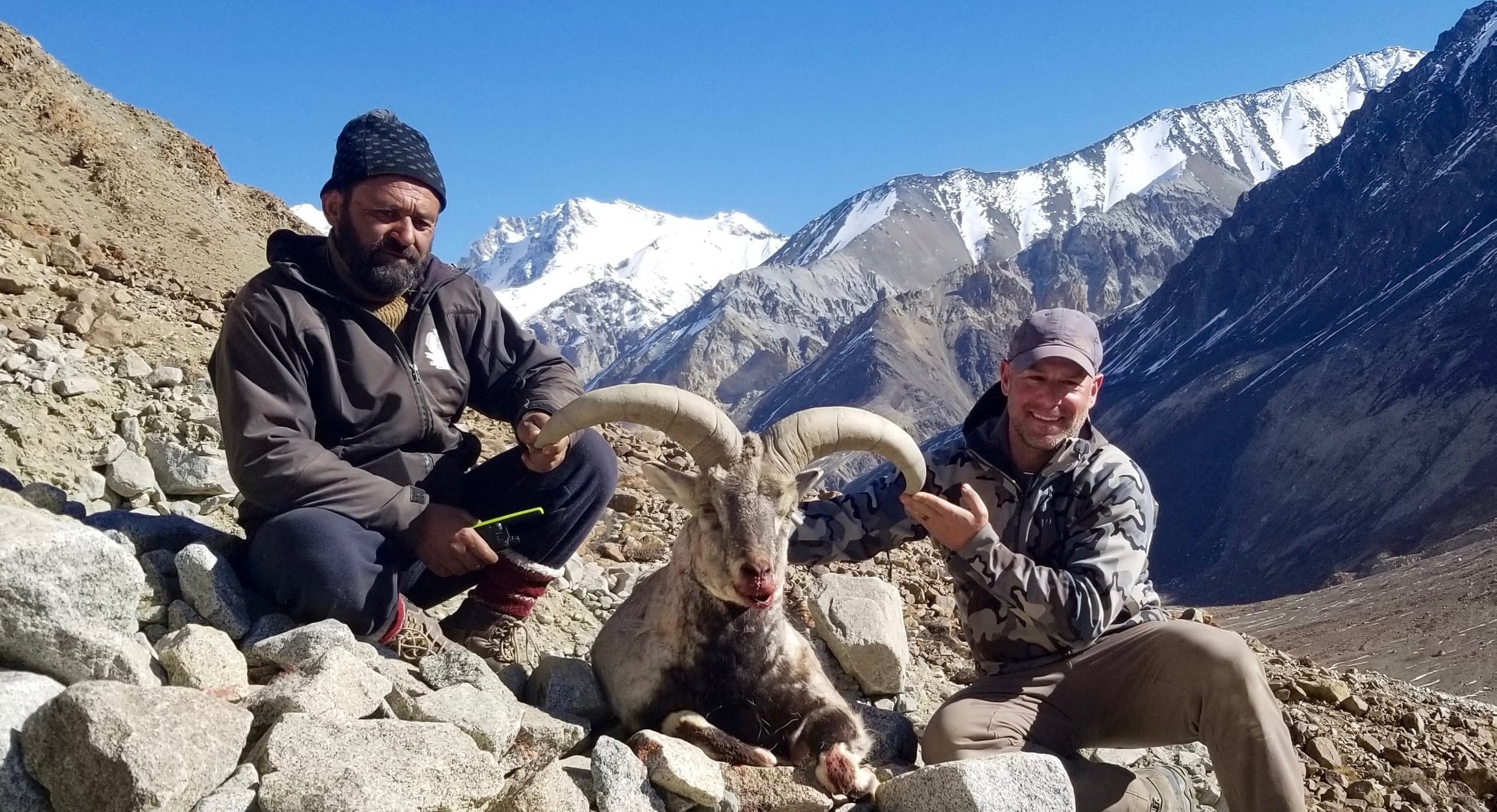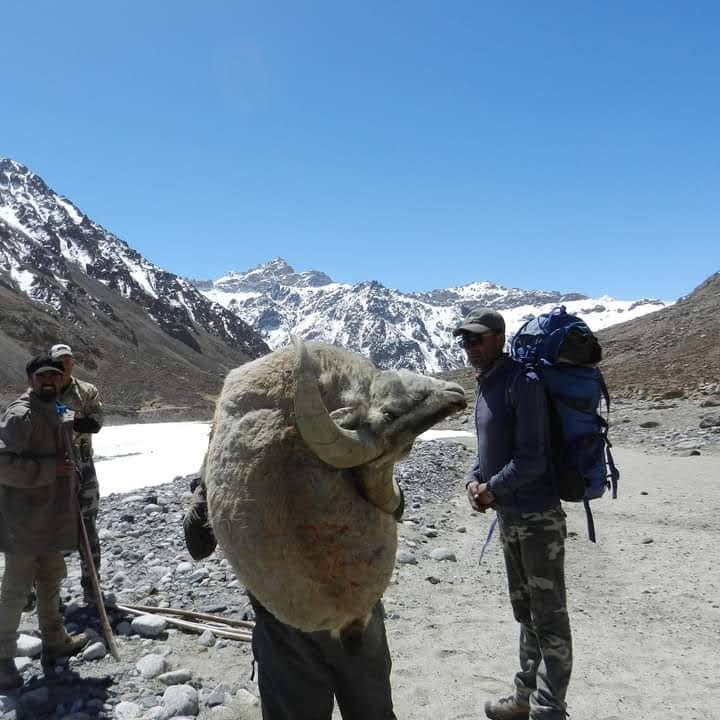We are pleased to have partnered with one of Pakistan’s most reputable, dependable and well-connected outfitter to offer Hunt Nation clients virtually all big game species currently available in this country. From the convergence of three of the world’s highest and most expansive mountain ranges in the far north, including the Himalayan, Karakorum and Hindu Kush, to the hot and arid desert in the southern region off the Indian Ocean, Pakistan is nothing short of spectacular and an unforgettable destination for any adventurous global traveler. Culturally, very little in Pakistan is recognizable to western society, yet the people here are some of the friendliest, hardest working and most hospitable one will ever meet. And Pakistan’s model of wildlife management, with the majority of license sales revenue directly benefiting local communities, now see thriving game numbers including species that were once on the brink of extinction in the not-too distant past. As a result, hunters can travel with realistic expectations of success regardless of the game they chose to pursue. Hunting in Pakistan is a well-organized effort that requires extensive advanced planning. Hunt Nation’s Derek Amadio took a blue sheep with this outfitter here in March of 2022, and offers our clients accurate and up-to-date information along with first-hand knowledge he is happy to share.
Travel
Islamabad international airport (airport code ISB), located about 15 miles outside Islamabad in the sister city of Rawalpindi, will be the starting point for all hunts in Pakistan and at which point the outfitter will personally meet and greet hunters. Although this airport is serviced by a number of international airlines, we recommend using Turkish Airlines with a connection in Istanbul as Turkish tends to be the most reliable option when travelling with a firearm. From Islamabad, most species will require a domestic transfer to either the northern areas around the city of Gilgit (for those hunting Himalayan ibex, blue sheep or markhor) or to the southern city of Karachi for (Sindh ibex and Blandford Urial). The cost of domestic flights is not included and must be paid in advance, however domestic flight prices are relatively cheap compared to domestic flights in the USA. Commercial flights to Karachi are reliable year-round and in most weather conditions, however the northern city of Gilgit is not equipped with sophisticated instrument landed equipment and can only be flown into when favorable weather conditions allow for a visual approach. For this reason, it is not uncommon for flights to Gilgit to be cancelled and refunded, often with very little notice. In such occurrences, the outfitter will hire a private car and driver for the +/- 12-hour ground transfer. The drive is long and grueling as you wind your way up the Karakorum highway with the mighty Indus River below.
From Gilgit (Himalayan Ibex, Blue Sheep and Markhor) – Hunters who are able to fly from Islamabad to Gilgit are usually able to transfer by car to Hunza or to base camp the same day, weather permitting. Those who must drive to Gilgit from Islamabad can usually get as far as Hunza before an overnight rest is needed before proceeding to Shimshal or other areas that serve as base camp the following day. Driving distances, again depending on species and the specific CCHA, and range from one to two hours to more than six hours. The drives from Gilgit or Hunza to the hunting camps is not a drive for the faint hearted or for those with a fear of heights.
Steep gorges with small two-track roads carved into the cliff edges are part of the experience and adventure here, and such roads require a slow, time-consuming process. Two travel days inside Pakistan should be planned on each side of the hunt schedule. Sindh ibex and Blandford Urial hunts from Karachi only require a three-hour drive to reach the hunting camp and often reached the same day flights arrive from Islamabad.
Himalayan Ibex, available only in the northern areas of Pakistan, are abundant with approximately 50 exportable permits issues each year. Although the average horn lengths are typically shorter than those of the mid-Asian ibex found in neighboring countries to the north, Himalayan ibex tend to have more horn mass, larger bodies and larger hooves. These are physically demanding hunts with significant hiking and climbing at high altitudes ranging from 11,000 to more than 14,000 feet in extreme cases. Easier opportunities, particularly during the December rut, do exist as it is not uncommon to find groups of ibex in close proximity to certain highways and road systems. Please ask us for details. Ibex hunts can be scheduled from late October (pending receipt of permits from the government) through April. We recommend November and December as well as March for this species. The majority of hunting areas will produce mature billies eight to 12 years of age with horn lengths ranging from 38” up to 46” with an average expectation from 40” to 42.” A few select areas are available for those seeking the largest-possible trophies, but permits are very limited for these special areas and the hunt cost is higher as the permits sell for a significantly more money at auction. These areas offer hunters a realistic expectation of 44” and larger. Our outfitter took the nations’ largest ibex from the 2021/2022 season in such an area; an exceptional 49” trophy.
Accommodations range from comfortable heated buildings within local villages to remote shepherds’ huts to spike camps with tents (less common). Temperatures during the December rut can be very cold and appropriate gear/equipment must be taken.
Blue Sheep (Bharal), arguably the world’s pinnacle species for mountain hunters, are available in only two of the world’s countries; Pakistan, with an average of eight exportable permits issued annually, and in Nepal, with an average of 12 exportable permits issued annually. In Pakistan, there are two areas that offer blue sheep hunting. The first is KVO; a small, steep valley with an equally small population of sheep. Although KVO physically easier to access and hunt, choosing this area represents a risk if the sheep are to be spooked or a shot is missed and they leave the area. For that reason, Pakistan’s second area, Shimshal, is recommended for most hunters. Thanks to sound conservation and the success of the CCHA programs, the Shimshal region of Pakistan supports the highest density of these animals in Asia and the majority of hunting opportunities each year. This region, particularly for blue sheep, is one of the world’s most physically demanding hunts and excellent physical fitness is required. Extensive ground travel just to reach this area is an unforgettable adventure in itself as you make your way through the mountainous landscape with roads etched into canyon walls and across deep gorges over suspension bridges. Disteghil Sar, Pakistan’s seventh tallest peak at 25,869’, towers over the valley when not shrouded in clouds. Once in Shimshal, Pakistan’s highest and most remote populated village, a guest house will offer a clean shower, hot food and a comfortable bed while a team of porters, guides, cooks and other support staff including a yak handler ready the gear for a demanding 15-mile hike to reach the primary base camp for blue sheep hunts.
Starting at an elevation a little over 10,000 feet, a small path maintained by local villagers throughout the year allows access into the hunting area that otherwise would not be accessible without a helicopter. Yaks offer assistance for those who need it, but anyone who may be afraid of heights should reconsider this hunt as the path is quite narrow and dangerous in places if care is not given. The trek is usually broken up into two days with an overnight stopover at a shepherds hut close to the halfway point. The main camp primarily used for blue sheep is situated in a large valley gorge at 13,000 feet surrounded by towering mountains surpassing 19,000’ to the north and south. The camp consists of handmade buildings with rock walls and dirt floors and provide adequate protection from the elements and moderate warmth from a small cooking stove. Similar smaller structures found a few miles further up or down the valley are regularly used as spike camps.
Blue sheep are pre-scouted by local guides several days prior to the arrival of each hunter. To aid the hunter, the porters and support staff will quite literally carry everything to camp that is needed for the hunt. During the hunt, the guides will carry all daily gear including the hunter’s rifle. Hunters only need to carry a walking stick. Additionally, yaks brought to camp can be ridden by the hunter in select areas if the terrain is suitable for yak travel. Hiking up to five miles from camp as well as vertical climbs up to 14,000 or 15,000 feet in elevation should be expected. Trophy rams range in size from 26 to more than 30”+, with exceptional rams found every season. The best season for blue sheep is October/November and again in March into early April.
Urial are one of Pakistan’s most popular species. The three primary species are the Blandford, Punjab and Afghan, however a fourth species is recognized in very small and protected numbers, the Ladakh Urial. Like all other species, Urial hunts are pre-scouted before the arrival of a hunter, and with healthy numbers and excellent quality, success on good trophies can be expected.
Blandford Urial, considered by many to be the most beautiful of the Urial in Pakistan, are hunted in the far south about three hours’ drive from Karachi. Although considered a mountain game animal, hunting is physically much easier than the game animals of Pakistan’s northern region and at lower altitudes seldom exceeding 3,000 feet. Additionally, very nice guest houses or hotels offer very nice accommodations and within relative close proximity to the hunting areas. On average, only two days of hunting are needed. This species combines very well with Sindh ibex as they share the same greater region. Punjab and Afghan Urial are available in smaller numbers and found in the central and eastern portions of the country. Pricing can vary due to unpredictable demand at auctions. November through March are ideal for Urial species.
Sindh Ibex, also found in the far south of the country, are hunted several hours outside the city of Karachi near the Indian Ocean with very comfortable camps. A close relative to the bezoar ibex, Sindh have similar horn configurations with smaller bodies and a lighter coloration. Horns on mature trophies average from 40” to 44” in length. The primary area hunted by our outfitter allows for the harvest of any-size trophy without any surcharge based on horn length. Two hunting days are typically required for success and like the Blandford Urial, Sindh ibex hunts are less physically challenging, especially when compared to the Himalayan ibex in the north.
Three species of Markhor are hunted in Pakistan, including the Astor and Kashmir in the northern areas and the Sulaiman found in the central portion of the country. Opportunities for these species is never guaranteed, yet most years will offer a handful of permits, each sold at very high auction prices. During the 2021/2022 season, for example, one single permit for Astor markhor sold for a record price of $162,500. Due to high demand and a very limited supply, hunt prices have soared in recent years and advanced notice is required for these species.
Non exportable Species
Additional big game species are available with non-exportable licenses including the nilgai and blackbuck antelope, Chinkara gazelle and hog deer. The outfitter is working in collaboration with government officials to allow exportable permits for a limited number of these species and remains hopeful the exportation will be approved in the near future.
Safety
Often the very first question that is asked about Pakistan is, “is it safe?”. The short and honest answer is yes. Pakistan is very safe, and all hunters are always accompanied by the outfitter or by a member of the outfitter’s staff. The people in Pakistan, particularly those from the small communal villages, are not only depended on the economic revenue from foreign hunters but are also some of the most hospitable and genuinely friendly people most will ever meet. They are polite, hard-working, family-oriented and humble. With that said, there are regions of Pakistan to avoid, namely near the Afghan border, however these regions are areas most foreign travelers will never need to transit through. Armed security escorts are common for foreign visitors, offered by the government as a courtesy and at no cost. A larger safety concern should be focused on the potential for rock slides and avalanches in the northern regions when hunting mountain game. Rock slides, from fluctuating temperatures, heavy precipitation or high winds are not uncommon and may close roadways for hours or even days at a time. In the mountains, safety is paramount and great care is given to ensure every hunter returns home with a positive and successful experience.
Hunting Permits and Community Controlled Hunting Areas (CCHA’s)
All permits for big game licenses in Pakistan are sold each fall at auction to the highest bidders which consist of licensed outfitters. The government places a minimum bid value on each permit, and if the minimum bid isn’t met the permit isn’t issued. More often than not, permits are bid well above the minimum price. The last few seasons experienced record demand and the highest license prices since Pakistan opened to international hunters. License fees are so high that as much as 80% of any given hunt cost is allocated just for the purchase of the tag. For this reason, the full price of a hunt must be paid prior to the September/October license auctions for the following season. Although expensive, 80% of the revenue from the sale of big game permits are paid directly back to the local communities who manage each regional big game heard. These funds have been used in areas, many previously stricken with poverty for new resources including medical facilities, education, clean water access and infrastructure. Additionally, the people in these remote villages now find new economic opportunities by guiding foreign hunters, working as porters for foreign hunters, working as cooks, game scouts, etc. This has not only incentivized locals to conserve wildlife and to contribute to anti-poaching programs but have directly resulted in a dramatic increase in big game numbers. The markhor of Pakistan is one example of a species revived from the brink of extinction, largely due to these successful hunting programs managed by these local communities. Naturally, these communities depend on sustainable management as any increase in game numbers will likely result in additional licenses which equates to additional revenue and employment opportunities for the people who live here. It is important to note, due to the unpredictable nature of license prices at auctions each year, it isn’t always possible to guarantee hunt pricing.
Entry Requirements
Foreign visitors of most countries are eligible for entry and must apply for a 30-day single entry tourist visa. The visa application process is longer and more time consuming than the application required by most other countries. Processing time, once complete and accepted, takes ten to fifteen days, on average. It is common for applications to be rejected after the first submission due to missing or incomplete information. If that happens, don’t despair as the application may be resubmitted until accepted. The online application can be found here: visa.nadra.gov.pk
Firearm Import
Firearm import into Pakistan is a relatively straight forward process. As a rule of thumb, it takes a minimum of six weeks for the outfitter to obtain a weapon permit. Only bolt-action hunting rifles are allowed. Semi-auto actions and suppressors are not legal for import. Hunters going to the northern areas for blue sheep, Himalayan ibex or markhor must import their own firearm as the outfitter cannot provide one for use in this region. If requested, rifles are available for use in the southern areas for those hunting Sindh ibex or Blandford Urial including a 7mm magnum with Meopta optics and a .300 win man with Zeiss optics.
Trophy Shipping
After the hunt, trophies will be transported to Islamabad, with clean skulls and dried capes, while export CITES permits are obtained by the outfitter. Once ready, the outfitter will deliver the trophies to an export shipping agent for delivery by air cargo, usually Emirates Airlines. Export costs vary by species, the number of trophies, the destination and by crate volume and weight. On average, the cost to export a single ibex or blue sheep trophy is $800 USD, however the actual price is subject to change from year to year.
Pricing 2025 (Subject to change)
• Blue Sheep: $55,000 depending on license prices at auction
• Himalayan Ibex: $15,000 to $16,500 depending on area
• Blandford Urial: $36,000
• Punjab Urial: $36,000
• Afghan Urial: $36,000
• Sindh Ibex: From $17,000
• Markhor, All Species: Please Inquire
*Deposits for any hunt are refundable if the outfitter cannot get the desired permit at or below a predetermined price at auction.
Prices Include: Rifle import permit, all applicable hunting permits, trophy fees for chosen specie(s), airport reception and all ground transfers once in Gilgit or Karachi, all guiding services including support staff and support yaks (if applicable), meals and accommodation during the hunt, preparation of trophies and delivery to expeditor in Islamabad.
Prices Do Not Include: International flights to Islamabad followed by any necessary transfers to Gilgit or Karachi by commercial aircraft or vehicle, meals and hotels in Pakistan before the hunt or after the hunt has concluded, Pakistan VISA application fee, export CITES documents plus trophy shipping and expediting to home country, travel and/or trip evacuation insurance and any voluntary tips to guides and staff.

